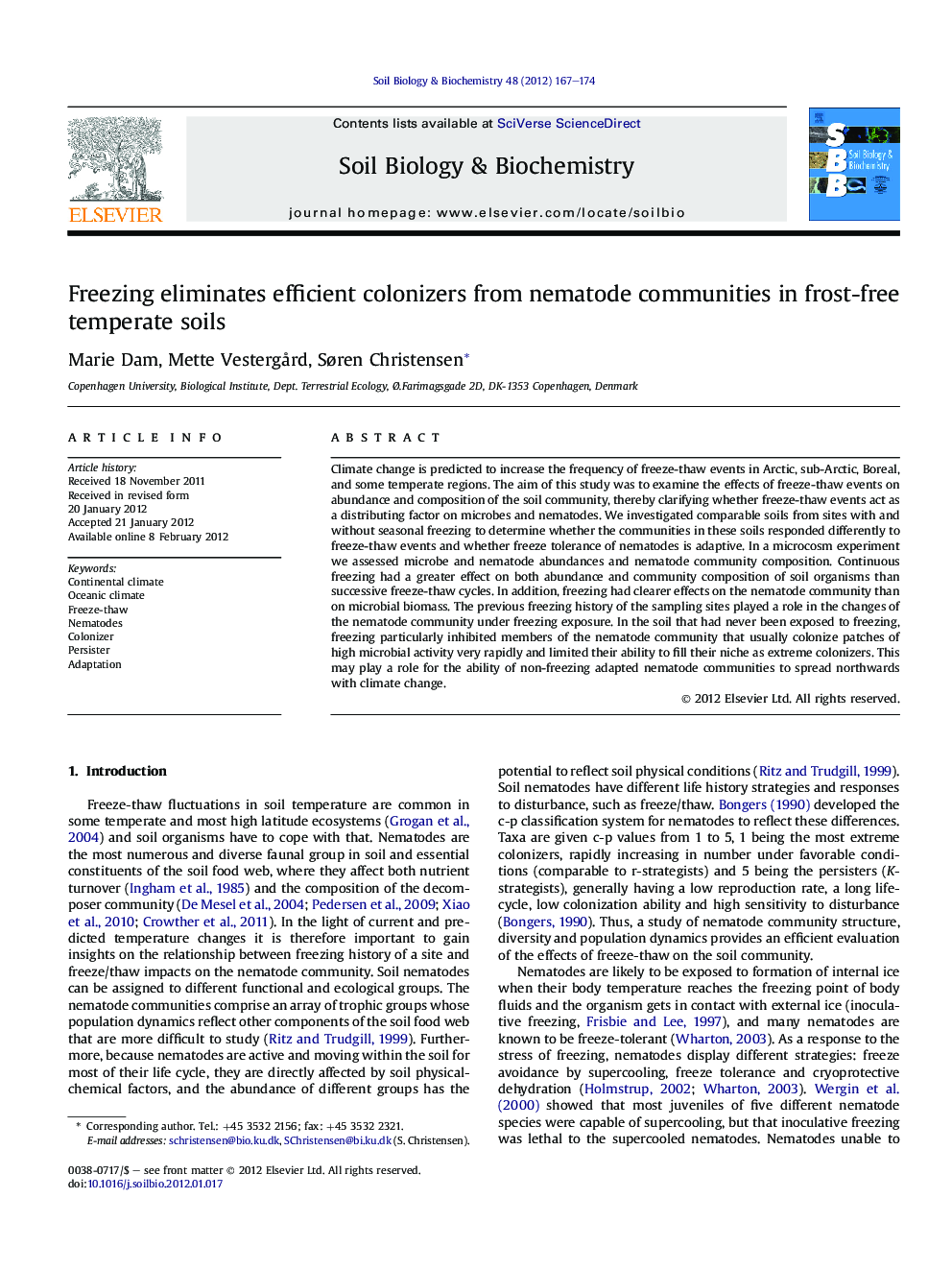| Article ID | Journal | Published Year | Pages | File Type |
|---|---|---|---|---|
| 2024946 | Soil Biology and Biochemistry | 2012 | 8 Pages |
Climate change is predicted to increase the frequency of freeze-thaw events in Arctic, sub-Arctic, Boreal, and some temperate regions. The aim of this study was to examine the effects of freeze-thaw events on abundance and composition of the soil community, thereby clarifying whether freeze-thaw events act as a distributing factor on microbes and nematodes. We investigated comparable soils from sites with and without seasonal freezing to determine whether the communities in these soils responded differently to freeze-thaw events and whether freeze tolerance of nematodes is adaptive. In a microcosm experiment we assessed microbe and nematode abundances and nematode community composition. Continuous freezing had a greater effect on both abundance and community composition of soil organisms than successive freeze-thaw cycles. In addition, freezing had clearer effects on the nematode community than on microbial biomass. The previous freezing history of the sampling sites played a role in the changes of the nematode community under freezing exposure. In the soil that had never been exposed to freezing, freezing particularly inhibited members of the nematode community that usually colonize patches of high microbial activity very rapidly and limited their ability to fill their niche as extreme colonizers. This may play a role for the ability of non-freezing adapted nematode communities to spread northwards with climate change.
► Freezing history is a distributing factor for soil nematodes re. freezing survival. ► In particular the fast-growing colonizer nematodes suffer from the freezing. ► Permanent freezing is more severe than a sequence of freeze-thaw events.
